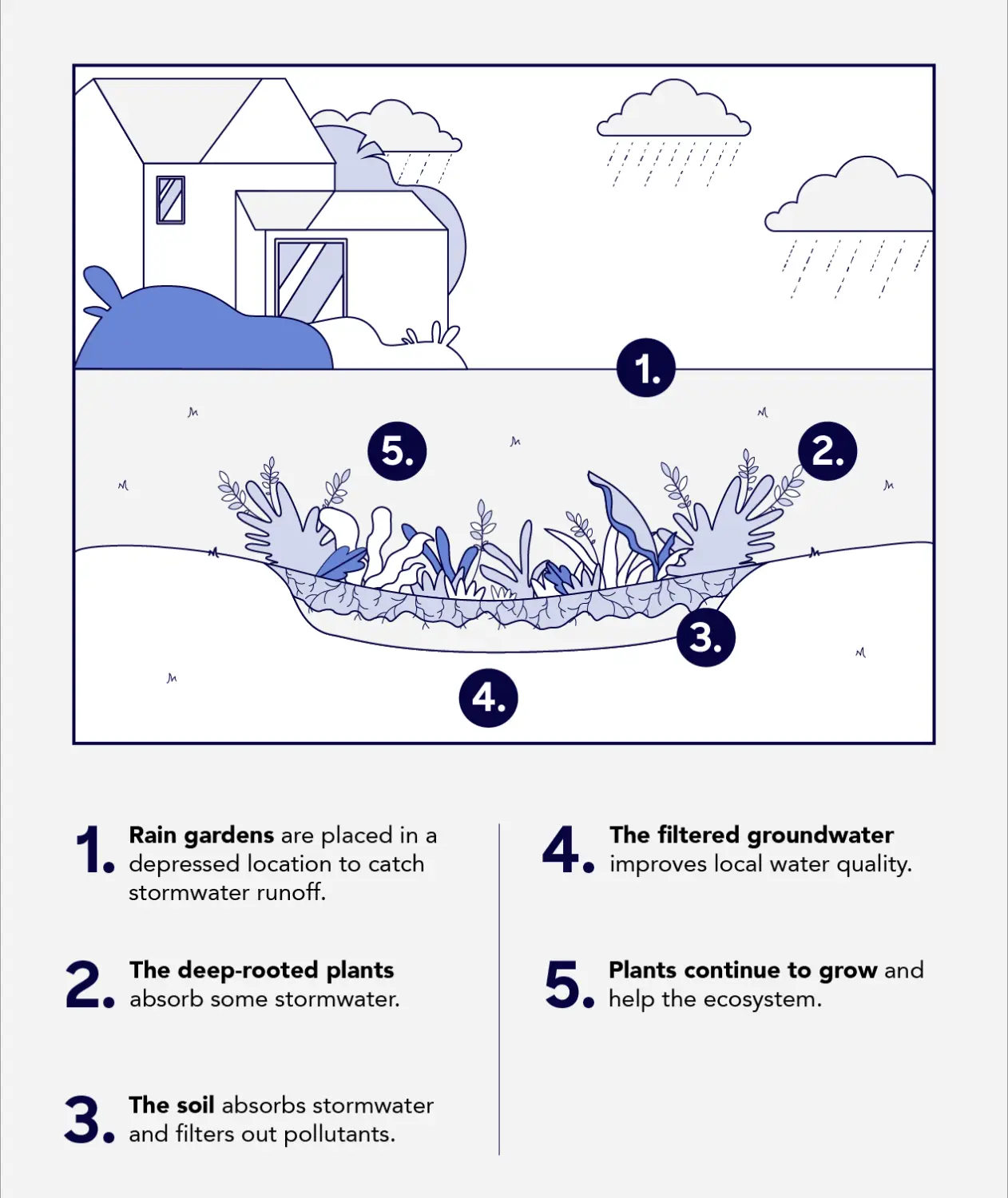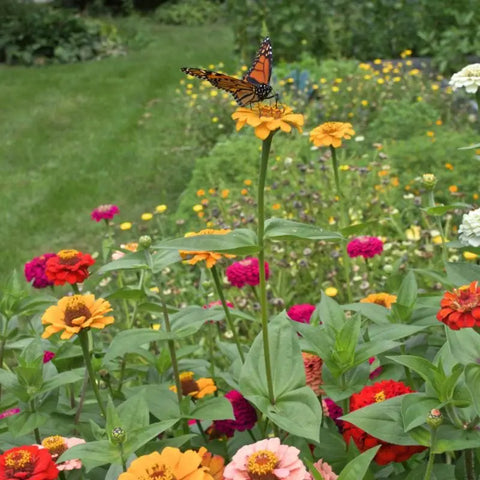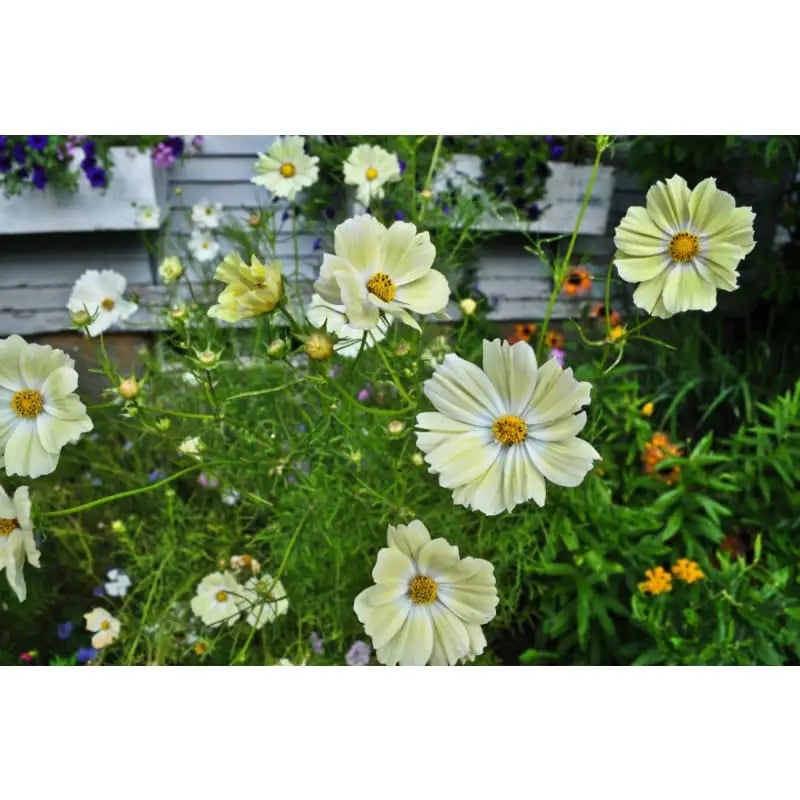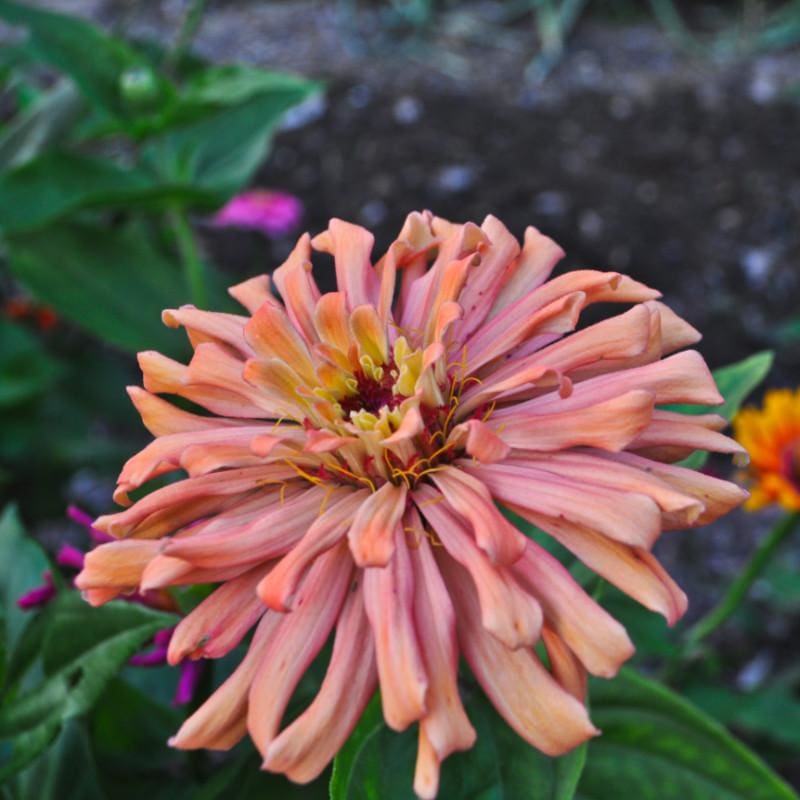In the era of the backyard oasis and ever-popular houseplant parents, it is vital to turn back to nature now and then. Bringing a great plant into your home or garden is a lovely way to add elegance and color to a yard or home. However, have you considered planting just for the sake of nature?
Rain gardens are just that. Using a strategic mix of native plants, they cut down on dangerous storm runoff and standing water through improved drainage. And with minimal support, they will become handy tools for local pollinators and other animals.
If standing water and storm runoff are causing issues on your property, then it might be time to consider a rain garden.
What is a Rain Garden?

A rain garden is a landscaped feature that uses natural flora to divert and absorb runoff water. Because of the dangers of runoff and standing water, rain gardens are key to keeping toxins out of the water supply. In fact, rain gardens can absorb up to 90% of the chemicals found in runoff.
Rain gardens are one of the best proactive solutions to runoff issues. They are simple and fairly cheap to make. They require little maintenance, and they are a great addition to the local environment.
Rain gardens also help in slow-draining areas. In rain-heavy locations, for example, low-lying areas can become mosquito breeding grounds. Rain gardens are a cost-effective solution to ensuring proper drainage and pest control.
A Garden of Benefits
Stopping runoff damage has many benefits on its own. By absorbing stormwater through plants, harmful toxins and waste materials are kept out of the water supply. Within the plants, they can be safely stored and naturally processed out of the food cycle. This simple step keeps local lakes and rivers (as well as the animals within) cleaner, not to mention ensuring our drinking water stays fresh.
Rain gardens are also ideal for preventing soil erosion. They are often constructed on sloped areas to maximize runoff capture. Sloped areas, especially those devoid of trees, are prone to damaging erosion. By introducing complex root structures to the site, the soil is better resistant to erosion. The natural cycle of the garden will also continuously keep the soil healthy and full of crucial nutrients.
Rain Gardens Help the Natural Pollinators
One of the greatest benefits of a rain garden is its contribution to nature. Rain gardens can become an ideal location for many wild pollinators. Pinetree Garden Seeds’ Pollinators: The Ultimate Companion Planting Guide describes which plants are the best attractors for many common pollinators. From bees to hummingbirds, and moths to beetles, your rain garden can play a vital role in the local ecosystem. And with ecological destruction impacting many natural pollinators, nature needs our help.
Pinetree Garden Seeds also has seed packs that are designed with pollinators in mind. The Bring in the Butterflies Collection comes with pollinator-attracting flowers such as:

Encouraging natural pollinators is a great first step in restoring the environment. Ecosystems can’t flourish without the normal growth and decay of plant life. Thus, without pollinators, that cycle can’t occur.
Maximizing the Potential
Anyone with property can create a rain garden. Still, while every rain garden is a good idea, there are various methods to maximize the impact.
Location
The proper placement of a rain garden is crucial to its function. If your yard is prone to flooding or runoff destruction, then you will know these areas by sight. Otherwise, look for sloped or low-lying spaces that are prone to standing water.
Impervious surfaces like roofs and driveways will increase water runoff. Strategic rain gardens where this runoff collects can be a great fix. Just keep a rain garden at least 10 feet from the house. Otherwise, the soil around the foundation can become oversaturated.
Soil Composition
Check the soil beneath your feet once you’ve decided on the best place to dig. Soil compositions will affect drainage and growing conditions. There are four major soil compositions, ranging from high to low permeability. High-sand soils have the highest permeability. Loam, a mixture of sand, silt, and clay, is less porous. However, the sand allows for plenty of drainage.
Soils with higher concentrations of silt and clay will be less permeable. If your soil isn’t ideal, don’t worry. Low permeability, high-clay soils can still support rain gardens. When digging, simply add some soil amendments to increase permeability and effectiveness. This includes compost, gravel, or sand.
Size
Any size rain garden will help. Most residential areas, though, can support gardens between 100 and 300 square feet. Different factors can affect how big you make your garden. For instance, soil types will affect runoff rates. Sandy soil will drain faster, thus potentially allowing for a smaller garden.
The garden should be 4to 8 inches deep for maximum drainage potential. This will depend on the slope of your yard. Slopes above a 5% grade will need a deeper garden to catch the water. Keep the deepest part of the garden in the center to avoid disruptive puddling.
Best Plants to Use
When it comes to plant selection, the sky’s the limit. The key factors to keep in mind are absorbency, your plant hardiness zone, and the plant’s role. When the goal is reducing runoff, then function takes priority over form. Fear not, however; there are several excellent trees, shrubs, flowers, and more that not only do the job, but look great as well.
Four of the best plants to use in your rain garden include:

-
Any type of Cosmos: Blooming in a rainbow of pleasing colors, these annuals grow well in whole light, and can handle just about any soil type. They are also quite attractive to butterflies, bees, and other pollinators.
-
Flowering shrubs, like blueberries: Shrubs are excellent for a rain garden. They are hardy, woody, and have beneficial infiltrating roots. Plus, you can eat the berries!

-
Bushy flowers, such as the Cactus-Flower Zinnia: Zinnias thrive in well-drained soil. They produce a lot of petals, help redeposit nutrients back into the ground, and invite plenty of native pollinators.
-
Moist-thriving trees: Trees that do well in high-moisture areas are great fortifications for any rain garden. Sprawling root structures and year-round branches help diffuse heavy rains and keep the soil intact. Plus, the shade will help invite many natural fauna to your garden.
Choose your plants based on their ability to handle high water/high drainage situations. Wetland grasses and marsh bushes are wonderfully suited to the task, but bright flowers and eye-pleasing plants are just as welcome. As well, natural pollinators will be looking for colorful flowers.
Focus on native species above imported varieties. Naturally, local plants are adapted to live in the local climate, and the fauna of the area will already be looking for familiar plants.
Final Thoughts
Rain gardens are key tools against erosion, pollution, and other environmental degradation. Not only can they filter harmful chemicals out of storm runoff, but rain gardens are also excellent natural depots of vibrant local growth.
A rain garden can become self-sustaining within a couple of years. In that time, your helpful island of shrubs and flowers can help reduce standing water and control local pests. They also ensure that local pollinators have several food sources. A rain garden is one of those rare tools that helps the environment just as much as it does people. If you have the land for it, break out your shovel and start digging as soon as possible. And click here for a great how-to guide if you have any questions about making your own rain garden!
Sources: "All About Rain Gardens" - The Groundwater Foundation, "Step 1: Sizing and Siting the Rain Garden" - Southeast Wisconsin Rain Garden Resources, RLA, Kirsten Coffen ASLA. “Tree and Shrub Rain Garden Design.” Arbor Day Blog, 27 Jan. 2011

